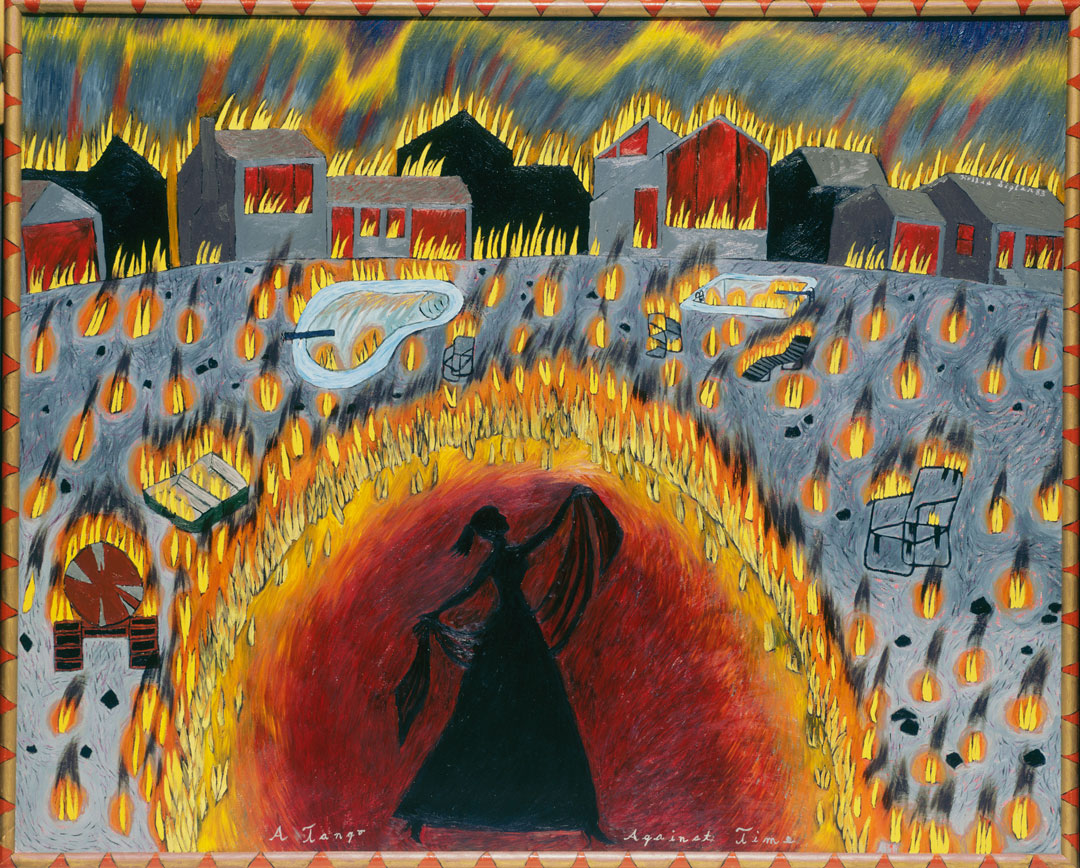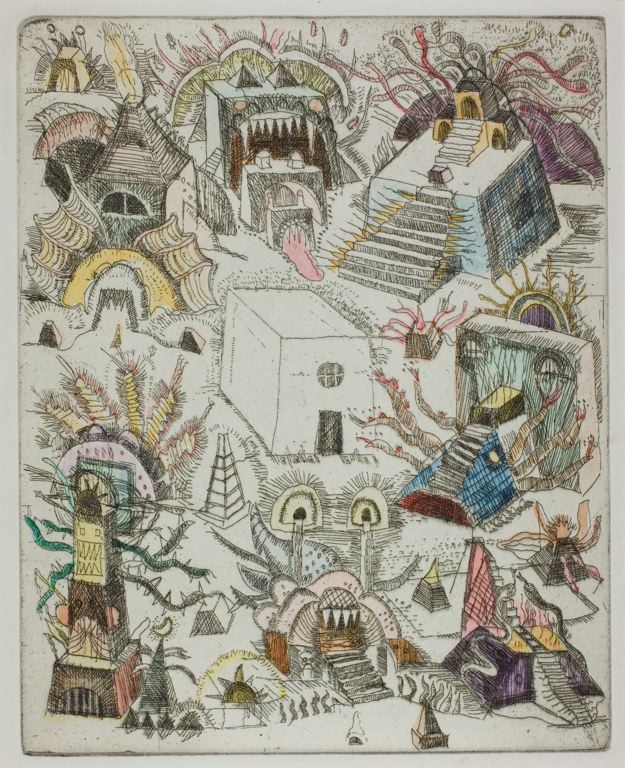Object of the Week: A Tango Against Time

The scene is a disturbing one: a woman’s silhouette, engulfed in flames, is set against a backdrop of further destruction—homes, pools, lawn chairs, and other debris are also mired in the far-reaching blaze. Painted by Hollis Sigler in 1983, A Tango Against Time is just one example of the artist’s intensely psychological and often autobiographical style.
Receiving her MFA from the School of the Art Institute of Chicago and later teaching at Columbia College in Chicago, Sigler was no doubt influenced by the Chicago Imagists, a group of artists whose figurative and folk-influenced work impacted her then-developing visual language. Hardly derivative, there is a certain way in which Sigler’s graphic style can be contextualized within the legacy of Imagists like Roger Brown and Philip Hanson.
However, Sigler’s faux-naïve mode of painting was purely her own and, after 1976, had political motivations as well. That is, her shift away from abstract expressionism and photorealism was a way for the artist to “disengage from what she viewed as a male-dominated academic tradition.”[1] Her evolution as an artist was thus inextricable from her feminist views.
In 1985, two years after the completion of A Tango Against Time, Sigler was diagnosed with breast cancer. Her struggle with cancer ended up informing her work for the next decade and a half. During this period her paintings took on pointed responses to the devastating illness and the psychological complexities of fighting what would eventually become a terminal disease for the artist. Much of this later work is formally similar to A Tango Against Time—with proscenium-like staging, vibrant colors, and surrealist undertones—but instead of human subjects, the paintings’ dramas focus on things. The absence of human figures heightens the roles that the various objects play, acting as metaphors for Sigler’s deeply personal narratives.
In this context, the presence of a female subject—soon to disappear from Sigler’s paintings—and the chaos surrounding her in A Tango Against Time takes on additional poignancy, foreshadowing the challenging personal and artistic changes that were to come. See this painting in person at SAM, it’s currently on view in On the Edge.
– Elisabeth Smith, Collections Coordinator


